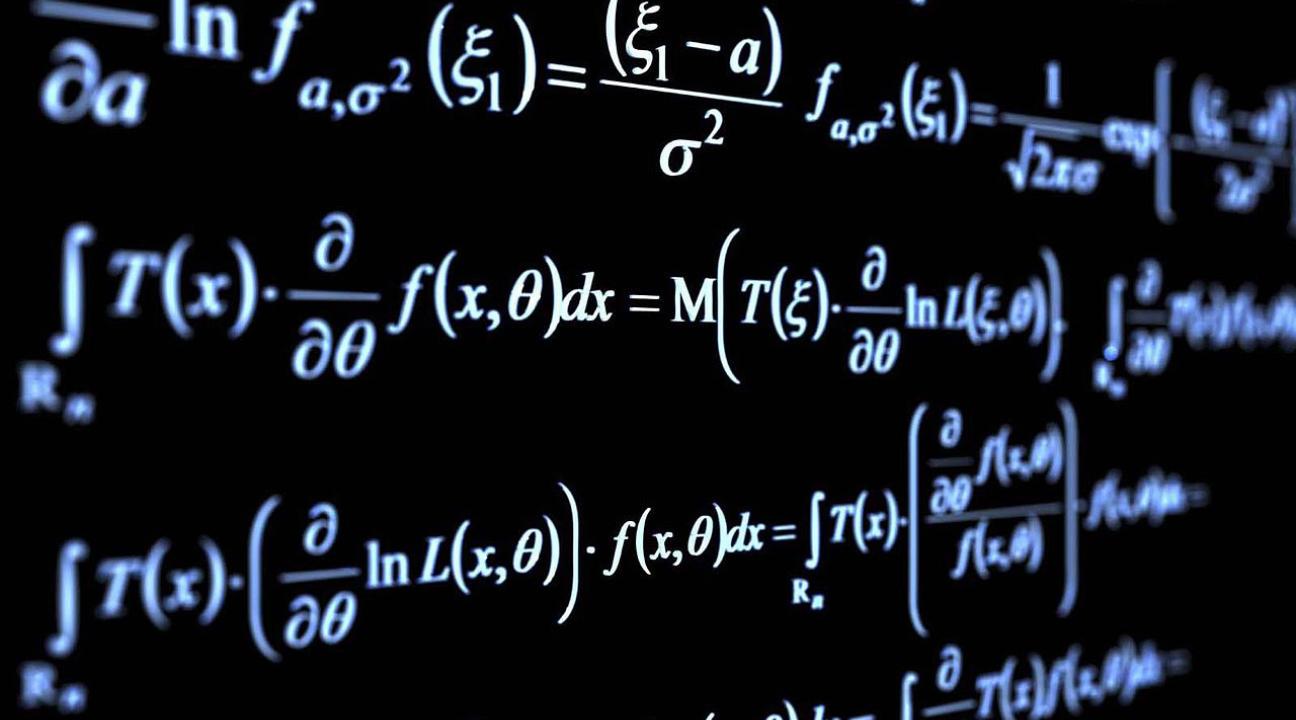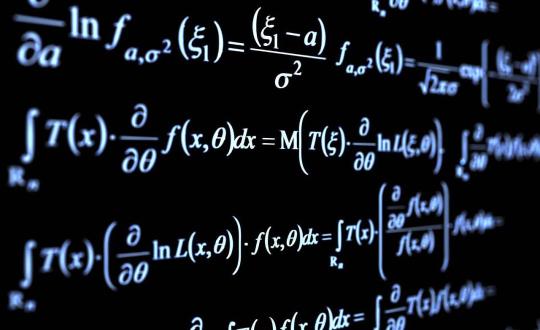Math Colloquium 2017
In addition to topics like math's role in watershed sustainability and the math in topology, Sonoma State University's Math Colloquium features lectures by three Sonoma State University alumni: Aaron Donahue, Greg Morre and Jessica Balli. Lectures are on Wednesdays at 4 p.m. in Darwin 103. Admission is free, parking is $5-$8 on campus. For more information or changes in schedule visit the math department.
Schedule of Math Colloquium Dates
Aug. 30
Mathematical Representations of Tropical Trees and Implications for Ecology
Lisa Bentley, Biology Department, Sonoma State University
The variety of tropical tree forms underlies the structure and function of tropical forests. While a descriptive basis exists to explain tree form, quantitative descriptions linked to mechanistic processes are lacking. This talk will discuss advances, gaps, and future directions in developing mathematical representations of tropical trees. The talk will also include the implications for using these models to understand of the fates of trees and forests under a changing climate and anthropogenic pressure.
Sept. 6
Mathematics for Watershed Sustainability
Martha Shott, Mathematics and Statistics Department, Sonoma State University
The practices of estimation and math modeling can be powerful tools toward managing valuable environmental resources. In this talk, Martha Shott discusses how fundamental mathematical concepts are integrated into SSU’s interdisciplinary freshman learning course Science 120: A Watershed Year. These mathematical principles can deepen the understanding of the surrounding Russian River watershed, improve the approach to promoting the health of this environment, and assist in solving relevant problems in resource management and sustainability.
Sept. 13
Computational Applications in Hurricane and Climate Modeling
Aaron Donahue, Lawrence Livermore National Labs
In late August 2012, a group of computational scientists were hunkered down writing a report that determined how the city and the state would prepare and respond to the approaching Hurricane Isaac landing along the Louisiana coastline. Running complex computational models on large high-performance computing clusters, scientists were able to predict where the storm will be the most destructive and more importantly find the extent of flooding due to storm surge. The unspoken heroes, working behind the scenes, are the differential equations that make it all work. Donahue's lecture will discuss the development and application of computational models. From a purely mathematical theory to execution to real world phenomenon on high performance computing platforms; with a particular focus on hurricane storm surge modeling and climate prediction.
Sept. 20
Analysis of Cancer Genomic Data Using Computational Algebraic Topology
Javier Arsuaga, University of California, Davis
Genomic technologies measure thousands of molecular signals with the goal of understanding essential biological processes. In cancer these molecular signals have been used to characterize disease subtypes, cancer pathways as well as subsets of patients with specific prognostic factors. This large amount of information however is so complex that new mathematical methods are required for further analyses. Computational homology provides such a method. Scientists have developed a new homology based supervised method that identifies significant copy number changes in the tumor genome. This method associates a set of point clouds to any given profile and uses β0 of the surfaces to detect frequent copy number changes and β1to further analyze the structure of the copy number changes. Professor Javier Arsuaga's team applied this method to a set of breast cancer patients with known molecular subtype. The analysis using β0 confirmed previously reported copy number changes and found three new significant changes in the basal subtype: 1p, 2p and 14q. The analysis using β1identified multiple co-occurring amplifications. Professor Arsuaga will discuss those related with the ERBB2/HER2 subtype (17q12, 17q21.2 and 17q21.33). The talk will also discuss possible extensions of this approach.
Sept. 27
Reasoning and Proofs in School Mathematics
Jeong-Lim Chae, Sonoma State University
Communities of mathematics education agree that reasoning and proofs are essential aspects of school mathematics, but many students still remember that their mathematics learning was memorizing unrelated formulas and regurgitating answers to given problems. Some argue that mathematics beyond basic operations is useless in real life and mathematics should not be required for all students. In this talk, Professor Jeong-Lim Chae will discuss how reasoning skills progress toward proofs in school mathematics and how to integrate mathematical proofs in teaching without the burden of formality and rigors. The role of teachers in promoting reasoning and proofs so that their students can understanding mathematics better will also be discussed.
Oct. 4
Euler’s formula and the Birth of Topology
Maia Averett, Mills College
In this talk, Professor Maia Averett llustrates the underlying philosophy and goals of algebraic topology by looking at a specific example in its historical context. Euler’s polyhedral formula is often considered to be one of the first theorems of algebraic topology and its underlying idea gave birth to the philosophy that drives algebraic topology. Averett will explain in broad terms what the goals of topology and it's history to place Euler’s formula in its appropriate context. The lecture will explore and generalize Euler’s formula to study two-dimensional objects called surfaces. This talk is intended to be accessible and interesting for undergraduates at all levels.
Oct. 11
Polyhedra Doing Calculus
Federico Ardila, San Francisco State University
Professor Federico Ardilla will introduce two beautiful polyhedra, and demonstate that they know how to perform two interesting calculus computations.
Oct. 18
Real Infinite Series: Pre-algebra Through Calculus II
Kirby Bunas, Santa Rosa Junior College
In this talk, Kirby Bunas will present an assortment of interesting and fun real infinite series examples and proofs, at levels ranging from pre-algebra through second semester calculus. While much of the material builds upon infinite series topics taught in first year calculus, the lecture will explore a few ways that real infinite series could, in theory, be introduced much earlier in the mathematics curriculum.
Oct. 25
Gerrymandering and Geometry
Greg Morre, Santa Rosa Junior College
Following the 2020 United States Census, congressional representation will be re-apportioned among the states. The congressional districts within each state must be re-drawn at this time. Gerrymandering is the process of manipulating district boundaries to favor a particular outcome of an election. In order to prevent gerrymandering most states require that electoral districts are compact. However, compactness is rarely defined. Professor Greg Morre will discuss different strategies used to gerrymander and examine how mathematics can be used to measure compactness and detect gerrymandering.
Nov. 1
Mathematical Relationships in Chemistry and their Connections with Student Understanding of Chemical Concepts
Jennifer Whiles Lillig and Carmen Works, Chemistry Department, Sonoma State University
Math is a daily component of every chemist’s existence. Trends in the field, particularly the emerging roles of big data and data science, make a fundamental understanding of math even more important in a chemistry career. However, for a student of chemistry, math can become a daunting obstacle when trying to connect a mathematical calculation to its chemical meaning. This lecture discusses common student stumbling blocks seen across standard chemistry curriculum including mathematical-chemical relationships in reaction kinetics, biological buffers, and the molecular absorption of light. Professors Jen Lillig and Carmen Works hope to provide a platform for discussion that can support mathematical understanding for chemistry majors and potential mathematics applications for math students.
Nov. 8
Math Bistro III
Bill Barnier, professor emeritus, Sonoma State University
The menu includes mathematical appetizers for the hungry mind and main dishes from Chefs Euclid, Diophantus, and others. Specials of the day will include √2 and Diophantine equations.
Nov. 15
Exploring Egyptian Fractions
Mike Nakamaye, University of New Mexico
Ancient Egyptian cultures expressed fractions using (distinct) unit fractions. For example, they might have written 2/5 = 1/3 + 1/15. In addition to having practical applications for fair division problems, this interesting way of writing fractions raises many interesting mathematical questions which Professor Mike Nakamaye will explore:
- How do you write a "regular" fraction as an Egyptian fraction?
- Can you write every fraction as an Egyptian fraction?
- How many unit fractions do you need to express 4/n for an arbitrary whole number n?
Nov. 29
Lessons Learned from Writing Mathematics Assessments
Jessica Balli, Callahan Consulting
Teachers spend hours crafting lesson plans that strike a balance between procedural fluency, conceptual understanding, and application in mathematics. However, when it comes to assessments, they are often collecting very limited information about what their students know. This presention will discuss how an SSU graduate is working with local schools and districts to improve assessment practices by providing students with opportunities to problem solve, reason, and model with mathematics.



